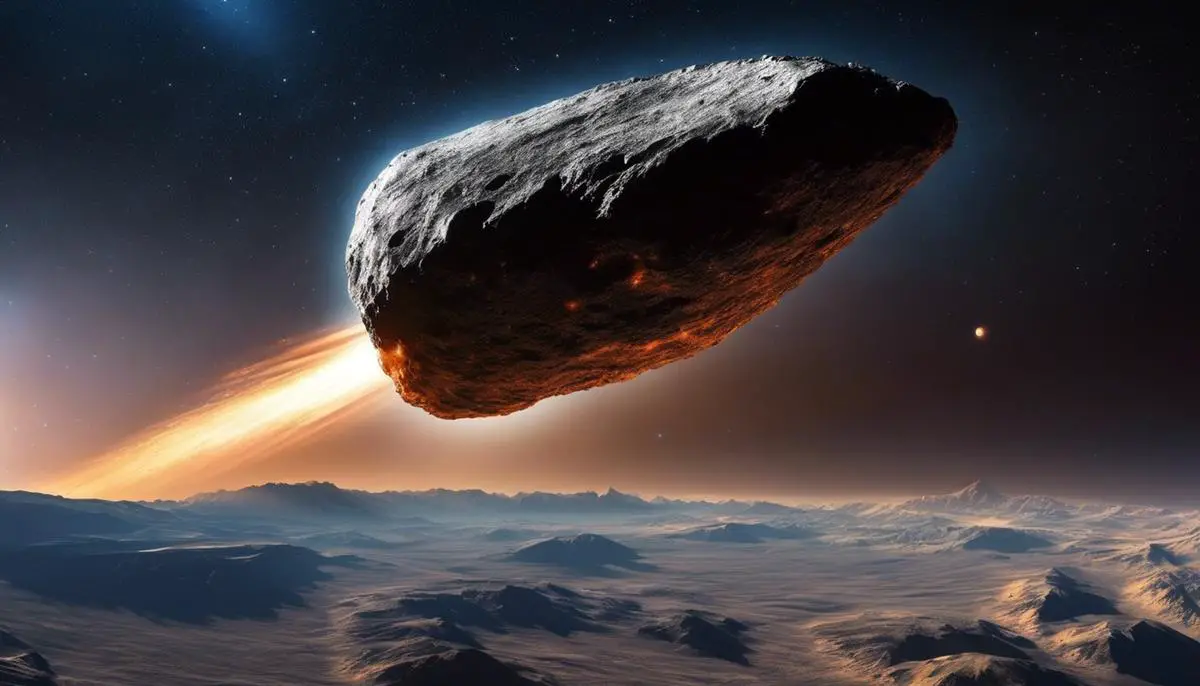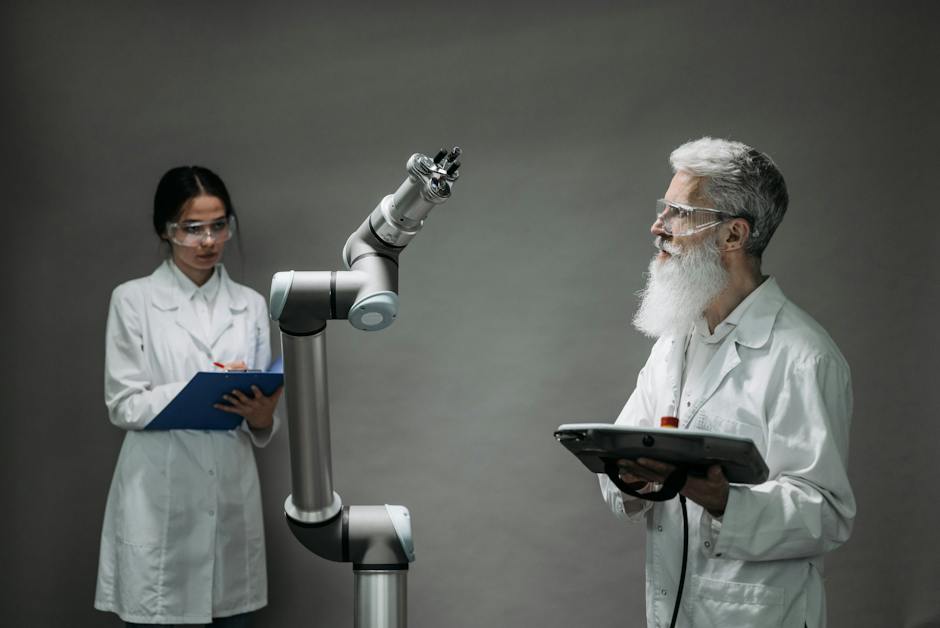In the vast expanse of space, where celestial bodies dance to the tune of gravitational forces, Asteroid 2007 FT3 orbits the Sun, occasionally crossing paths with Earth’s own trajectory. Its discovery has reverberated through the astrophysical community, thrusting the asteroid into the spotlight of near-Earth object (NEO) studies. As a harbinger of potential celestial threats, the journey of understanding this rocky visitor begins with dissecting the intricacies of its discovery, orbit, size, and composition. Sifting through the wealth of observational data and applying sophisticated orbital simulations, researchers tirelessly work to map out the asteroid’s path, gauging the odds of an Earth encounter. The accuracy of such predictions is not merely academic—it underpins the very protocols that could one day safeguard our blue planet from an unwelcome cosmic event. Through demystifying Asteroid 2007 FT3, we embark on a crucial quest to quantify the risk it poses and prepare for the consequences should our orbits ever collide.
Understanding Asteroid 2007 FT3
An Analytical Dissection of Asteroid 2007 FT3: Characteristics and Risks
The foray into the study of celestial objects is not solely driven by an insatiable curiosity but is necessitated by the intrinsic quest for the safety of our planetary domicile. Within this scope of astrophysical diligence, Asteroid 2007 FT3 offers a compelling subject of analysis due to its potential Earth-bound trajectory. As academicians and scientists, the exploration of its characteristics serves to heighten our comprehension of near-Earth objects (NEOs) and refine our risk assessment frameworks.
Asteroid 2007 FT3, first observed in 2007, is an Apollo-class asteroid, which denotes that its orbit intersects with that of Earth’s. The specimen possesses a diameter estimated to be in the realm of 340 meters, a dimension that immediately categorizes it as a potentially hazardous asteroid (PHA). This classification is not only descriptive of its size but also its minimal orbit intersection distance (MOID) to Earth, a calculation critically regarded when enumerating celestial impact risks.
Fundamentally, the kinetic energy wielded by an asteroid is a function of its mass and velocity. Given 2007 FT3’s considerable size and average approach speed, an impact would release energy in the order of several megatons of TNT equivalent. The ramifications of such a collision would be catastrophic at a regional scale and could potentially have climatic implications globally.
Furthermore, the composition of 2007 FT3 is inferred to be a mixture of silicate rock and metal, a trait it shares with the broader class of stony-iron meteorites. This composition is significant insofar as it influences the asteroid’s albedo, thermal properties, and structural integrity upon potential atmospheric entry.
In terms of its orbit, 2007 FT3 is subject to non-gravitational forces such as the Yarkovsky effect—a phenomenon in which an asteroid’s trajectory is subtly altered due to the asymmetric emission of thermal photons. For precision in long-term impact risk assessment, this becomes an imperative aspect of study. Additionally, the gravitational perturbations during close encounters with terrestrial planets further complicate its orbital dynamics and contribute to the inherent uncertainty in its future paths.
The anticipated encounters of 2007 FT3 with Earth have been closely monitored by the Sentry Risk Table, maintained by NASA’s Jet Propulsion Laboratory. As of the latest computations, the accumulated probability of impact remains low for the next century. However, one must acknowledge that low probability is not synonymous with negligible consequences. The continuous refinement of our observation techniques and the development of advanced computational models are essential in mitigating the latent threat posed by such NEOs.
In the eventuality of an increased risk scenario, international collaboration for the purpose of asteroid deflection or disruption would become a pressing agenda. The comprehensive strategy could encompass an array of responses from kinetic impactors to the utilization of nuclear explosive devices as a last resort. Preemptive deflection missions that gently steer the asteroid onto a benign trajectory, over years or decades, are the subject of current aerospace research and development.
Conclusively, the intent vigilance of the scientific community and continued advancement in near-Earth object detection and interception technology are our bulwarks against the uncertain whims of our solar system’s rocky inhabitants. Asteroid 2007 FT3, then, serves as a case study not merely of academic interest but of existential import to human society and the planet at large. The rigorous pursuit of knowledge in this sphere stands as a testament to the envisagement and precautionary principles that underpin responsible scientific inquiry and safeguarding of our shared future.

Current Monitoring Systems and Detection Techniques
Continuing with the discussion of near-Earth objects (NEOs) monitoring, it is imperative to outline the intricate web of technologies and methodologies utilized to keep a vigilant eye on these celestial neighbors. A synergistic approach is employed, encompassing a series of ground-based and space-based assets designed to detect, track, and characterize NEOs such as asteroid 2007 FT3.
Ground-based radar systems play a crusial role. The utilization of radar facilitates the precise determination of an asteroid’s position, velocity, and other critical parameters. One of the pivotal systems in this domain is the Arecibo Observatory in Puerto Rico, though, unfortunately, it has succumbed to structural failure. The Goldstone Solar System Radar in California’s Mojave Desert is another such potent tool within NASA’s Deep Space Network, enabling detailed observations of NEOs.
Optical telescopes are also crucial, with automated surveys such as the Pan-STARRS in Hawaii and the Catalina Sky Survey in Arizona leading the charge. These telescopes scan the skies nightly, cataloging NEOs and other astronomical phenomena. Their wide-field cameras capture vast swathes of the sky, detecting the faint light of NEOs against the backdrop of stars.
In the space-based surveillance category, the NEOWISE mission – an offshoot of the Wide-field Infrared Survey Explorer (WISE) – is particularly noteworthy. By detecting the infrared light emitted by asteroids, NEOWISE helps to determine their true sizes and reflectivity, variables that are often difficult to ascertain through optical means alone.
The upcoming Near-Earth Object Surveillance Mission (NEOSM), tentatively set to launch in the mid-2020s, aims to take NEO detection capabilities to new heights. NEOSM will hunt for potentially hazardous asteroids using an infrared telescope, exploiting the heat emitted by NEOs to reveal objects that optical telescopes may miss, particularly those of dark, non-reflective composition.
Analytical tools are equally vital. Orbital determination algorithms ingest the raw data supplied by telescopic observations, refining the accuracy of an asteroid’s predicted path. The application of statistical models provides estimates on NEO populations and impact probabilities. Moreover, data from these monitoring systems feed into advanced dynamical models that simulate the influences of celestial mechanics and solar radiation effects (Yarkovsky and YORP effects) on the trajectory of objects such as 2007 FT3.
In conclusion, the comprehensive monitoring of near-Earth objects is a multifaceted endeavor necessitating a blend of sophisticated technologies and advanced analytical methodologies. It integrates the power of radar, the reach of optical and infrared telescopes, and the precision of computational astrophysics. Through such collaborative scientific efforts, we forge new paths in the understanding and potential defense against the myriad cosmic bodies that traverse our near-Earth environment.

Mitigation Strategies and Planetary Defense Initiatives
The grave and ubiquitous nature of asteroidal threats to our planet necessitates a robust defense strategy. Commensurate with this need, prevailing strategies to mitigate the impact threat from near-Earth objects (NEOs) such as asteroid 2007 FT3 involve advanced technological and conceptual approaches.
The first line of defense against NEO impacts is a robust Earth-based observational network. Kinetic Impactor techniques, which involve sending one or multiple spacecraft to collide with the NEO to alter its trajectory subtly, represent a practical approach to the deflection strategy. These projects work under the principle of transferring momentum to the NEO, ideally redirecting it away from Earth’s orbital path.
Similarly, the gravity tractor method stands out as an innovative use of gravitational forces. Spacecraft would be flown to the NEO and, by maintaining a stationary hover, exploit the gravitational attraction between spacecraft and asteroid to slowly, over time, modify the NEO’s path.
Nuclear explosive devices reformulate the rudimentary idea of asteroid disruption. By deterring from the direct use on the NEO’s surface, so to avoid fragmentation risks, these devices could be detonated at a proximity to the object, providing a radiation impulse to thrust the asteroid off course.
Laser ablation offers yet another strategy. This advanced concept, though still in the early stages of development, involves the utilization of high-powered lasers to slowly evaporate material from the asteroid, creating a jet stream effect that could push the asteroid away from its collision trajectory with Earth.
The aforementioned strategies necessitate early detection; the earlier a potential impact is identified, the more feasible and effective the deflection methods become. It is thus pivotal for the scientific community to prioritize investment in early warning systems and refine orbital prediction techniques.
Perceiving the gravity that these celestial challenges impose upon humanity requires a dedicated and unwavering commitment to defense research. Notwithstanding the bounds of current technology, a forward-looking lens toward disruptive innovations in space engineering and inter-planetary defense mechanisms is central.
Continual refinement of planetary defense strategies is justified by the non-negligible probability of consequential asteroid impacts, as past extinctions have unambiguously shown. Therefore, the scientific community should, and likely will, persist in enveloping the globe with an intricate web of vigilance, ensuring the most comprehensive defense coverage against the specter of NEO impacts.

The Role of International Collaboration in Asteroid Defense
Enhancing Global Coordination for NEO Threat Response
The imperative for transnational coordination in mitigating the risks posed by near-Earth objects (NEOs) cannot be understated. The herculean task of defending our planet against celestial threats necessitates the pooling of resources, expertise, and capabilities that exceed the capacity of any single nation or institution. In light of this, the global effort to enhance our capability to defend against asteroid threats like 2007 FT3 exemplifies a concerted drive towards unity of purpose in the realm of planetary defense.
NEOs embody a class of celestial bodies whose orbits bring them into proximity with Earth, and the potential of their collision with our planet poses a relentless challenge which demands unwavering vigilance. A comprehensive strategy to confront such threats is hinged upon the integration of data collection, sharing, and analysis across a wide array of scientific disciplines and technologies.
In the context of such a strategy, the international space surveillance network is a linchpin. It is an intricate fabric woven together by the contributions of numerous observatories, facilities, and organizations scattered across the globe. The seamless sharing of data fostered by this network enhances orbital predictions, refines risk assessments, and accelerates the formulation of response strategies.
The collaborative frameworks currently in place are buttressed by multiple international treaties and organizations such as the United Nations Committee on the Peaceful Uses of Outer Space (COPUOS), which has been active in fostering discussions and recommendations on the global handling of NEOs. It also underlines the significance of collective engagement as we look towards the expansion of human interests in space.
When considering the strategies for active NEO threat mitigation – kinetic impactors, gravity tractors, and even nuclear disruption techniques – the engineering and scientific expertise required is immense. These technologies are approached with caution and demand international oversight due to their dual-use nature and potential for misuse. A global consensus on the ethical application and development of such technologies is paramount, and only through collaborative engagement can the necessary cooperation and transparency be ensured.
Moreover, initiatives like the International Asteroid Warning Network (IAWN) serve to consolidate and disseminate NEO-related information, ensuring that member states and organizations are informed and prepared to contribute to a mitigatory response should a credible threat arise. The formation of the Space Mission Planning Advisory Group (SMPAG) further underscores our collective commitment to prepare and possibly enact response missions to NEO threats.
The quest for planetary defense is a clarion call that resonates with the shared fate of humankind. It represents not merely a technical and scientific challenge, but also a philosophical one – to see beyond terrestrial borders and disputes, uniting in defense of the singular home that we all inhabit. It is a testament to the potential of global cooperation, an arena where competitive endeavours are eclipsed by the collaborative pursuit of existential security.
In conclusion, the coordination of global efforts epitomizes the belief in a collective shield against the capricious nature of cosmic hazards. This endeavor, rooted deeply in a blend of scientific rigor and international collaboration, lays bare the reality that Earth’s defense against celestial threats is stronger not in isolation, but in unity. The shared vigilance embodied in our planetary defense initiatives remains a beacon of cooperative survival, reaching into the vast expanse with a resolute and unwavering sentry against the unknown.

Our world, a vibrant mosaic of nations and cultures, is unified under the celestial umbrella that graces every corner of the globe. The challenge of defending this home against external cosmic threats, such as Asteroid 2007 FT3, transcends borders and underscores the essential role of international cooperation. Through the lens of planetary defense, the value of shared knowledge, pooled resources, and collective expertise shines with unmatched clarity. The intricate tapestry of global partnerships, research alliances, and cooperative agendas manifests a deep-seated resolve to protect all of humanity. As we forge ahead, bolstered by technological prowess and a spirit of unity, we stand ready to face the mysteries of the cosmos with confidence and coordination, affirming our commitment to planetary stewardship and the indomitable nature of human collaboration.
![]()
